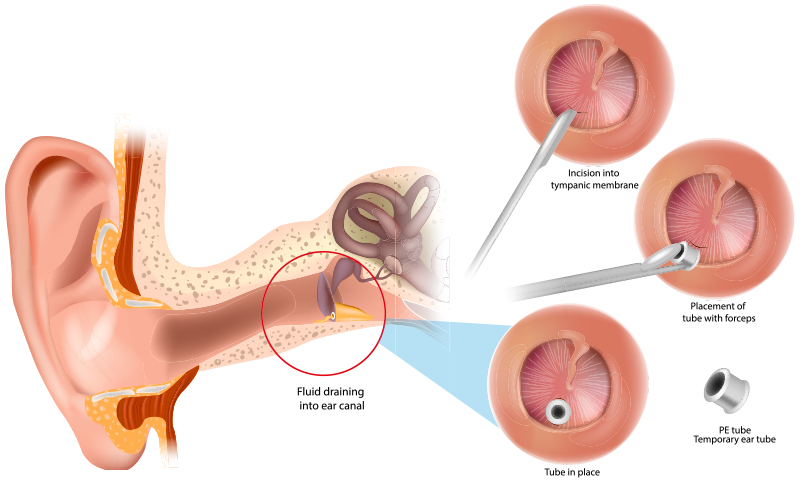Ear Tubes: Relief for Chronic Ear Infections
May 28, 2024
By: Steve Reich, MD
Categories: Pediatrics
Painful ear infections are common in children
Ear infections in children are common. They can be painful and disruptive, causing difficulty with sleeping, hearing, or balance. They may lead to further issues including speech delay or permanent hearing loss. Bacteria or a virus that infects fluid in the middle ear causes these infections. Antibiotics may be prescribed for a child that has a fever of 101 or higher, has otorrhea (ear drainage), or has symptoms lasting longer than 2 days. In some cases, seeking care from an otolaryngologist is recommended. One of the treatments we provide for chronic ear infections involves inserting tubes in the ear.
What are ear tubes?
The eustachian tube, which is what helps us equalize the pressure behind the eardrum, does not work very well in children because of their small head size. Therefore, the middle ear (the space behind the eardrum) cannot get proper air ventilation. Small, hollow cylinders made of plastic are inserted in the eardrums to allow that needed ventilation.
How do I know if my child needs ear tubes?

Our guidelines recommend ear tubes if there have been at least 3 ear infections in 6 months or 4 in a year with persistent ear fluid remaining in the middle ear, on at least one side.
How are ear tubes inserted?
In general, the child is placed under general anesthesia. We make a small incision in the eardrum to remove the fluid from the middle ear, then a small tube is inserted in the opening to ventilate the ear and prevent fluid buildup. The procedure is simple, taking only a few minutes, with little to no pain.
How do tubes provide relief?
The pain from an ear infection is caused from the pressure of the fluid behind the eardrum. The ear tubes prevent the buildup of that fluid, eliminating the pressure and the pain.
Are ear tubes permanent?
No, ear tubes last on average between 6 to 18 months and will fall out on their own. Over time, the eardrum heals and pushes the tube into the ear canal that will eventually exit the outer ear. In general, a child will outgrow problems causing chronic ear infections. In rare instances (about 1% of children), problems with the eustachian tube may continue into adulthood, requiring the adult to continue needing ear tube treatment.
Talk with your child’s pediatrician if you’re concerned about chronic ear infections. They may refer you to an otolaryngologist who specializes in ear, nose, and throat conditions to see if ear tubes may help.

